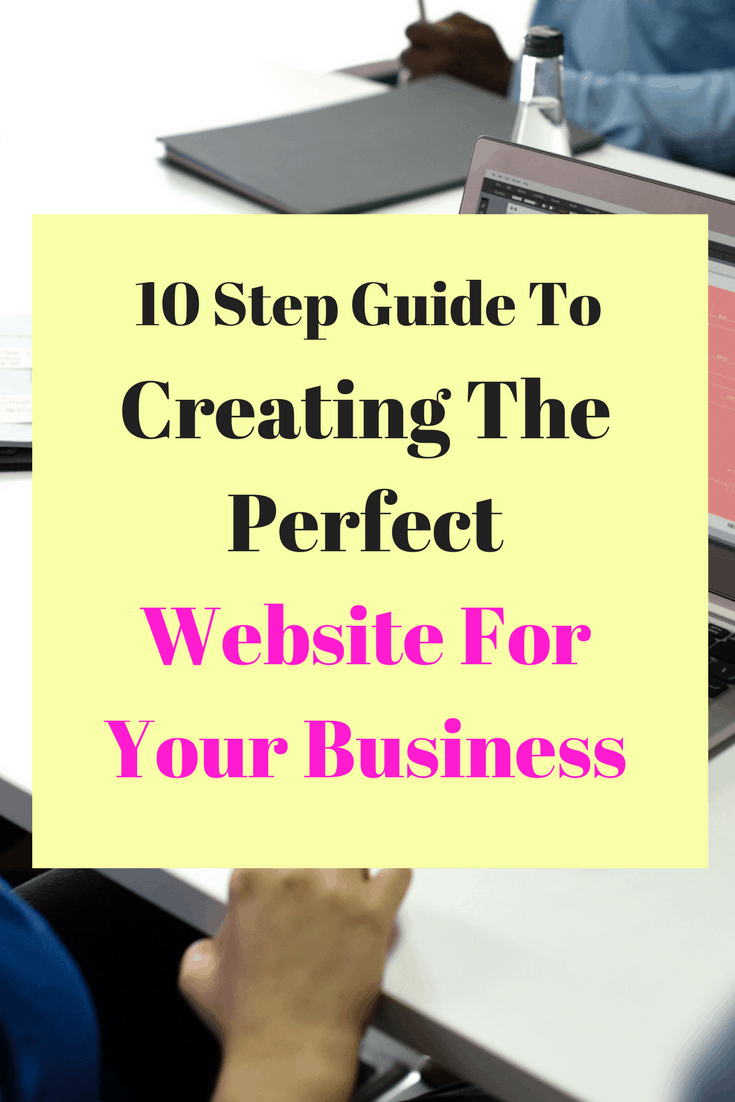A website has become as important to a business as its name. Not only is it the first place that people will look to find out more information about you, but it could also be the place that generates the most business.
Your website needs to be able to stand out from your competitors, and in today’s digital age – ordinary simply won’t do. To create the perfect website for your business, you’re going to need to put a plan in place. Your plan should cover everything from how you want your website to look to what you want people to do when they land on it. It’s not a straightforward job, but there is help available to you to get things off the ground and into the open.
Create the perfect website for your business with this handy ten-step guide.
1. Choose and register your domain name
Your domain name is more important than you know, and you’ll want to spend some time considering the best option for your business website. Choosing the right domain name can be easy if your business’s name is available, but could be more challenging if there are other businesses (especially large companies and brands) that share your name.
Register your selected domain name as soon as possible to stop anyone else getting their hands on it. It’s an affordable thing to do, so you can register your domain name in the early days of your business and worry about building the website later.
2. Select a web host
When you’re ready to start building your website, you’ll need to choose a hosting provider to give your website a home online. Web hosts provide the space and bandwidth to make your website possible, and can also determine factors such as the speed of your website. Choose a web host that is secure, recommended and offers support. You can get stung with a poor web host, so make sure that you choose one that has plenty of reviews and testimonials.
3. Decide on a content management system (CMS)
A CMS is the tool you will use to put content on your website. If it’s going to be you taking care of website updates and so on, then the right CMS is essential for avoiding hassle and frustration further down the line. Choosing the best CMS will depend on different factors, but ease of use is particularly important if you’re not very experienced or comfortable with uploading web content.
When the time comes to choosing a web developer, they might have their own suggestions and ideas as to which CMS to use. Make sure you’re comfortable with their selection, as it’ll be you that’s using it going forward.
4. Think about your content
Now that the foundations are all there, you can start thinking about what you actually want your website to feature. Will it have an e-commerce element? Is it an information portal? What do you want it to say?
It’s easy to create a website full of text and reading material, but in today’s world that’s no longer going to cut it. People choose the websites they spend time on very carefully, and if something doesn’t hold their interest – they’re going to move away. Planning website content requires some careful consideration – you don’t want to end up creating the wrong first impression on website visitors.
Website copy should be kept, short, sharp and simple – especially on the homepage. If you have ideas for what you want to say but don’t know how to say it, then you might want to consider hiring a copywriter to help get your words out there. When writing copy isn’t in your day-to-day job, it can be difficult to do it effectively.
5. Hire a web designer
Now that you’ve got a firm idea of what you want your website to be, you can get a website designer on board to help turn your vision into a reality. The right web designer will be able to create a great design for your website that reflects your business, your branding and other elements that will make sure it fits in with the rest of your business.
There are several things to consider when hiring a web designer. Firstly, budget could be the deciding factor for who you choose, and could even mean that you consider choosing a web page builder like Squarespace over a web designer. There are pros and cons to both, but if you lack the time or knowledge to create a web page, you might be better off hiring a professional to take care of it.
The right web designer should have the right skills and experience to fit your needs. Not all web designers are suitable for all briefs, so if your business is a construction business, you should look for a construction web design specialist, while a law firm might need a legal web design expert. Do your research to find the most appropriate person for the role.
6. Hire a web developer
You might be confused as to why you need to hire a web designer and a web developer, but there is actually a difference between the two roles. The main difference between a web designer and a web developer is that a web designer takes care of the visual element of the website, while the web developer might take care of the back end and deals with more complicated programming.
You might be able to find a professional who can take on both tasks, which will make it easier for you regarding money, as well as making sure your website is joined up. Someone who can do both will save you time and stress, so it’s an option worth considering to help you get the website you want.
7. Make adjustments and tweaks
Once all of the components have come together, you’ll have a clearer idea of what your website looks like in the real world. This is your opportunity to make changes to your copy, your images and other elements to ensure that you’re happy with the final product. Websites are fluid, so you’ve got a lot of flexibility to make changes until you come up with your preferred look and feel
At this stage, you might want to enlist the help of someone who’s never seen the website before to give their honest opinion of usability and design to help you see issues you haven’t thought of before.
8. Test it
Testing is an important part of the website building process, allowing you to search for errors and problems before you push ahead with the real launch. There are different things to look for when testing your website, including speed, reliability and compatibility – so make sure you test everything or hire an independent tester to check that everything is in order.
Remember to test your website across different platforms. Something might work on a computer’s web browser, but it might not look so great on a mobile phone or tablet. With more people than ever using their phones as their only source of browsing, compatibility should be one of your greatest concerns for your website.
9. Put a promotion plan in place
To help people find your website, you’re going to need an effective marketing campaign in place to raise awareness and to point people towards your web page. There are some proven ways to market your website that will help it get seen by your target audience, and help raise further awareness of your business too.
When putting together social media content for your business, you should always include a link back to your website to help people find out more about you, make a purchase and more. Think of how you can promote different content related to your website to help you put your plan in place.
10. Launch it!
Now that you’ve got all of your pieces in place, you can finally launch your website. This is a big step for your business that will allow you to expose your business to a wider range of people and hopefully increase your profits.
Once your website is live, you’ll need to maintain it. Content should be reviewed and refreshed, regularly and you’ll also need to make sure elements like a blog or news page are constantly kept up to date. Every now and then you could issue a customer feedback survey to help you make website improvements and ensure that your website remains as good as it can be.
While this guide offers a basic overview of what it takes to create the ideal website, there are different routes and options you can take to turn your ideas into reality. Creating the perfect website takes a lot of work, but with the right plan in place, you can create a dream website that is the perfect fit for your company and an important aspect of your business.





